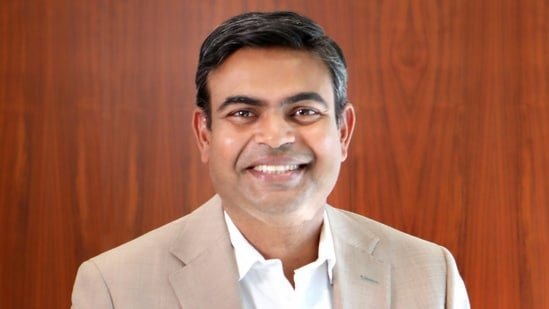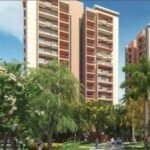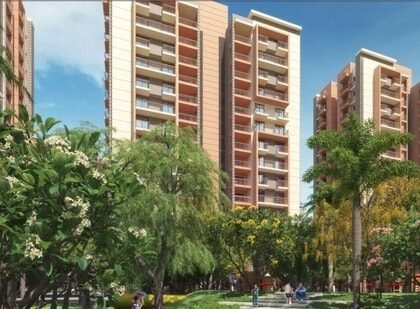After several quarters of premiumisation, demand in Bengaluru’s housing market is consolidating around the ₹2–3 crore price band, a segment largely driven by end-users, said Sobha Ltd’s Managing Director Jagadish Nangineni. He said affordability and ticket-size sensitivity are once again shaping the city’s housing mix, even as buyers continue to favour high-quality developments.
More than 70% of the quarter’s sales were sustained by end-user demand, particularly for projects such as Sobha Townpark in south Bengaluru, where most transactions were in the ₹2–3 crore range, Nangineni said during the company’s Q2 FY26 investor call recently.
Commenting on price trends, he said, “We are entering a phase of steady demand and supply in Bengaluru. And probably in some aspects, the supply might increase. And if that does, then from a pricing point of view, we should see a stable or an inflationary increase in the pricing than the kind of price rises we have seen in the last 4 years.”
Addressing a question on project timelines and occupancy certificates, Nangineni stated that the restructuring of the Bruhat Bengaluru Mahanagara Palike (BBMP) into the new Greater Bengaluru Authority (GBA) had led to temporary delays in project approvals; however, the issue has now been resolved.
“Ticket size definitely helps in terms of sales,” Nangineni said, adding that larger, well-planned projects are seeing stronger traction because “customers are gravitating toward bigger communities. And hence, this is a distinct advantage in certain projects like Townpark and which has created that positive or virtuous cycle of good sales.”
Talking about the homebuyers’ decision-making cycle, he said, “In the first quarter of this financial year, that’s where we saw a little bit of hesitation in terms of customer purchase decision-making. But as the pricing has continued to increase, then certainly the budget and the ticket size will, and the aspect of these two will start kicking in. And that’s very clear that now, again, the ticket size constraint is a big factor in how we mix our projects, and also, that’s one in terms of when it comes to certain geographies or certain micro markets.”
Sobha achieved ₹3,981 crore in sales value during the first half of FY26, representing a 30% year-on-year increase, with Bengaluru contributing 48% of the overall sales. Of the 1,576 homes sold, 770 units worth ₹1,902 crore were recorded in Q2 alone, with the majority of transactions occurring in the mid-luxury segment.
Restructuring of Bengaluru’s municipal corporation led to initial delays
Addressing a question on project timelines and occupancy certificates, Nangineni said that the restructuring of Bengaluru’s former municipal body, the Bruhat Bengaluru Mahanagara Palike (BBMP), into the new Greater Bengaluru Authority (GBA) had caused some temporary delays in approvals, especially for its project Sobha Magnus on Bannerghatta Road.
“The main reason for this was the restructuring of the BBMP, which is now Greater Bangalore Authority,” he explained, noting that the transition period affected processing times for certain clearances.
However, Nangineni clarified that the issue has since been resolved. “Now, once all the systems are in place for all five corporations to be in operation, we don’t foresee any major reasons for delay,” he said, emphasising that approval processes in Bengaluru and other cities are now back on track.
Steady price growth ahead
Nangineni said that most of Sobha’s recent buyers are end-users gravitating toward larger gated communities, especially in Bengaluru’s eastern and southern micro-markets, such as Sobha Townpark.
“Customers are far more gravitating towards larger projects where the communities are larger,” he said, adding that delivery confidence and visible infrastructure development are boosting sales sentiment.
“Delivery confidence is also seen by the customers, and the kind of infrastructure that’s getting developed around the whole location also gives a lot of confidence to customers,” he said.
While home prices in Bengaluru have risen steadily for three consecutive years, the company expects only inflation-linked increases going forward. “We are entering a phase of steady demand and supply in Bangalore,” Nangineni noted.
“I think we have seen good price increases in Bengaluru for the last couple of years (or)3 years. There has been a continuous rise, mainly due to the demand-supply again and end-user demand has really has pushed up the prices, whereas the supply has been reasonably stable. So, we are entering into a phase of steady demand and supply in Bangalore. And probably in some aspects, the supply might increase. And if that does, then from a pricing point of view, we should see a stable or an inflationary increase in the pricing than the kind of price rises we have seen in the last 4 years,” he said.
Expansion plans and financials
Sobha plans to launch 8–9 million sq. ft. of new projects across seven to eight cities this fiscal year, including Sobha Magnus in South Bengaluru, and aims to complete 5.5 million sq. ft. by year-end.
“Overall, we have a strong residential pipeline of 15.96 million square feet across 13 projects in 9 cities and a commercial pipeline of about 0.74 million square feet across all our operation cities. We envisage launching these forthcoming projects in the next 4 to 6 quarters. Also, we are working on our subsequent project plans rapidly for about 24 million square feet. And in addition to these launches, our existing inventory at the end of the quarter was about 10 million square feet with a potential sales value of ₹13,000 crore,” Nangineni said.
The developer has a 15.96 million sq. ft. residential pipeline and expects to generate ₹22,867 crore in future inflows from ongoing projects.
Chief Financial Officer Yogesh Bansal stated that the company achieved its highest-ever quarterly collection of ₹2,046 crore, primarily driven by real estate sales, and closed Q2 with a net cash position of ₹751 crore.
“We have clear visibility of future cash flow and a strong financial footing with robust operational efficiency,” he said.




